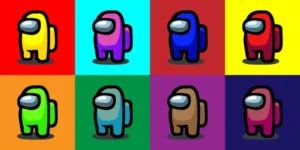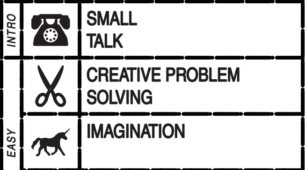Critical Play: Among Us

For my critical play assignment, I selected Among Us, created by InnerSloth, and played on iOS (I believe it is also available on PC and Nintendo Switch). Why Among Us? Initially, I intended to play Secret Sith and was particularly excited by its Star Wars-inspired premise. I registered on the Discord chat and attempted to start a session, but unfortunately, no one joined. That said, this experience itself was fascinating to me as a non-gamer – and definitely something I will try doing over the weekend…
Although Among Us was a massive hit during the pandemic, I played it for the first time specifically for this assignment – and quickly understood its popularity. In contrast to traditional social deduction games like Mafia, where subtle physical cues (movements, vibrations) might unintentionally expose players’ roles, the digital format of Among Us effectively eliminates these accidental giveaways. This makes deception more convincing and gameplay more interesting, significantly enhancing the overall experience.

Playing Among Us proved to be introspective, mirroring my typical behavior in ambiguous, high-pressure social situations. Usually, when feeling confident, I actively create space for everyone to feel comfortable. However, if I am unsure, I feel awkward but still try to voice doubts or ask questions openly, even at the risk of appearing clueless (which is often the case when it comes to games). Interestingly, in the game, this openness often backfired… Expressing uncertainty as a crewmate made others suspect me immediately – as if I was pretending ignorance. Conversely, when I played as an Impostor, I strategically adjusted my communication style, limiting transparency carefully to avoid suspicion. Game mechanics, such as brief discussion periods and hidden roles, heightened my awareness of communication strategies, compelling me to remain vague and follow conversational trends closely (similar dynamic to the common approach of the impostor in other games like fake artist).
Among Us uniquely combines traditional bluffing mechanics with spatial deception. The addition of real-time movements, spatial positioning, and interactive tasks introduces extra layers of complexity far beyond verbal deception alone. Even believable statements like “I was in electrical” rapidly unravel if another player recalls contradictory movement patterns. While playing via text chat on my iPhone somewhat constrained nuanced communication, voice or video chat could greatly intensify social dynamics. Moments of slight hesitation, such as pausing briefly before reporting a dead body, proved critical, highlighting the necessity of decisively committing to a narrative.

Ethically, the role of lying within Among Us feels permissible due to Huizinga’s “magic circle” concept, which separates playful fiction from real-world dishonesty. Within this context, deception is not betrayal but rather immersive performance crucial to gameplay. However, frequent play might reasonably raise concerns about normalizing or honing skills in real-life deception. From my experience, however, the overall effect seems more positive than negative –> rather than becoming more dishonest, I found myself increasingly sensitive to how easily truths can be constructed, distorted, or obscured. In today’s climate, where misinformation and manipulation are widespread, cultivating critical awareness of truth construction might be among the most valuable insights offered by this game.
I really enjoyed playing it! 🙂


